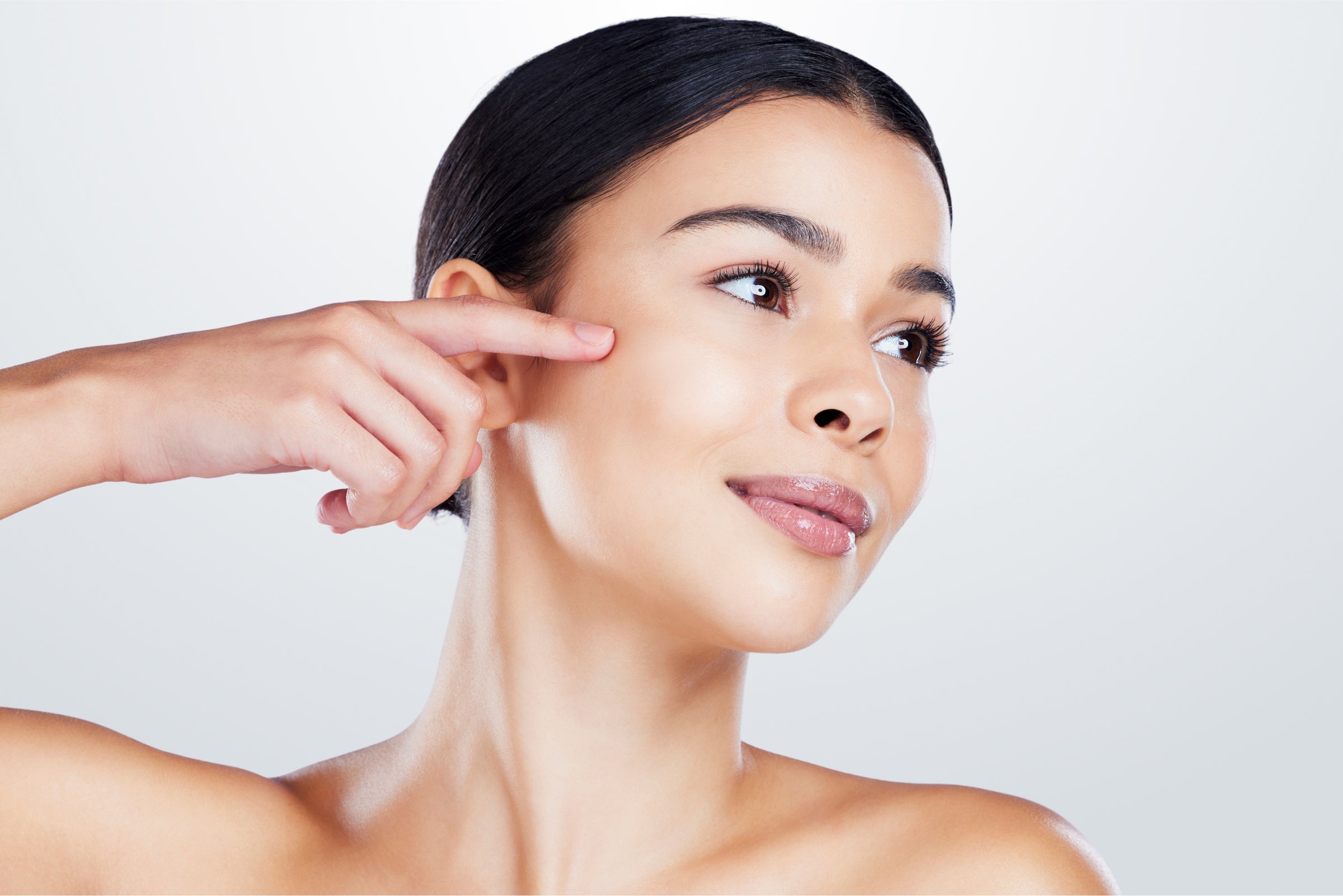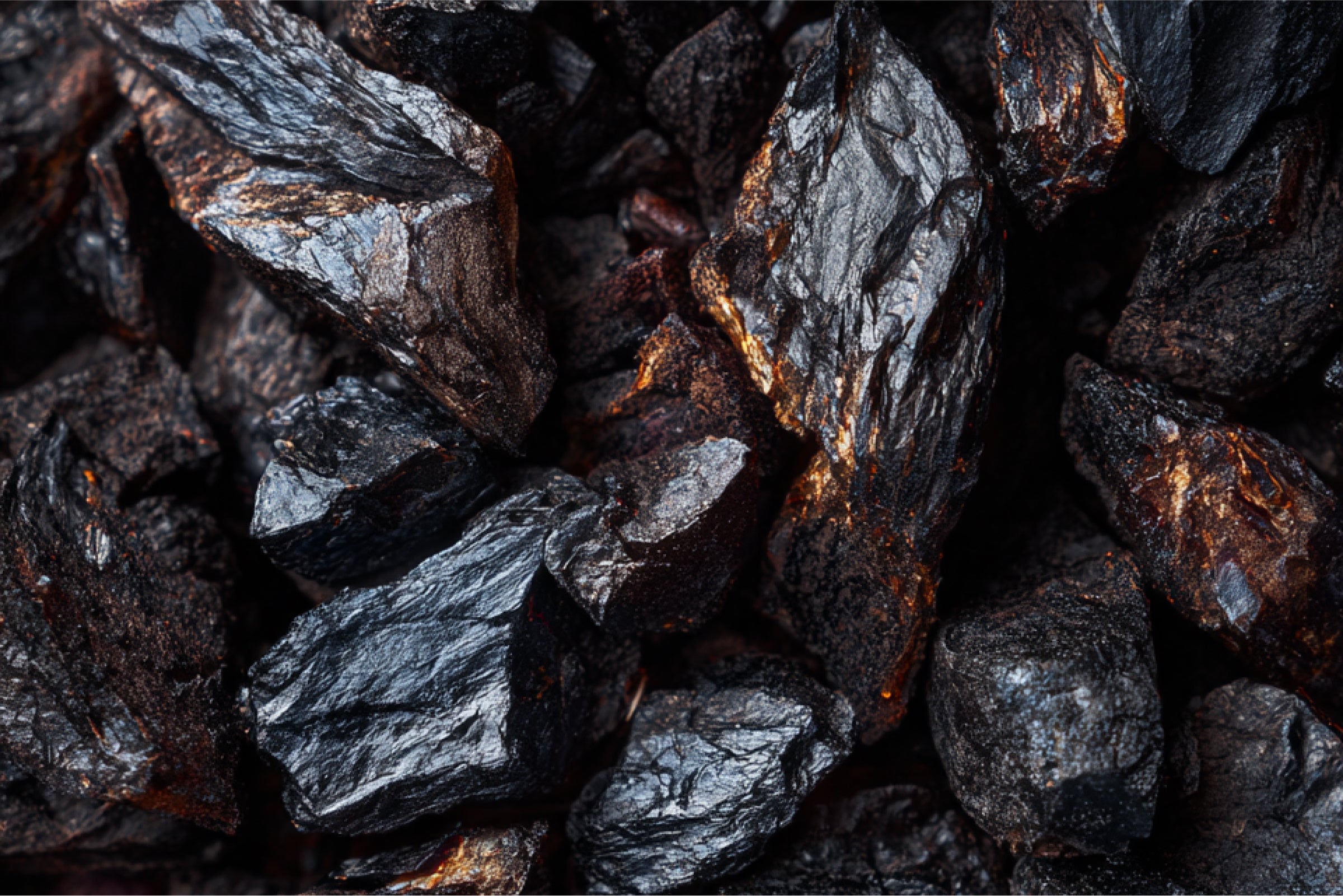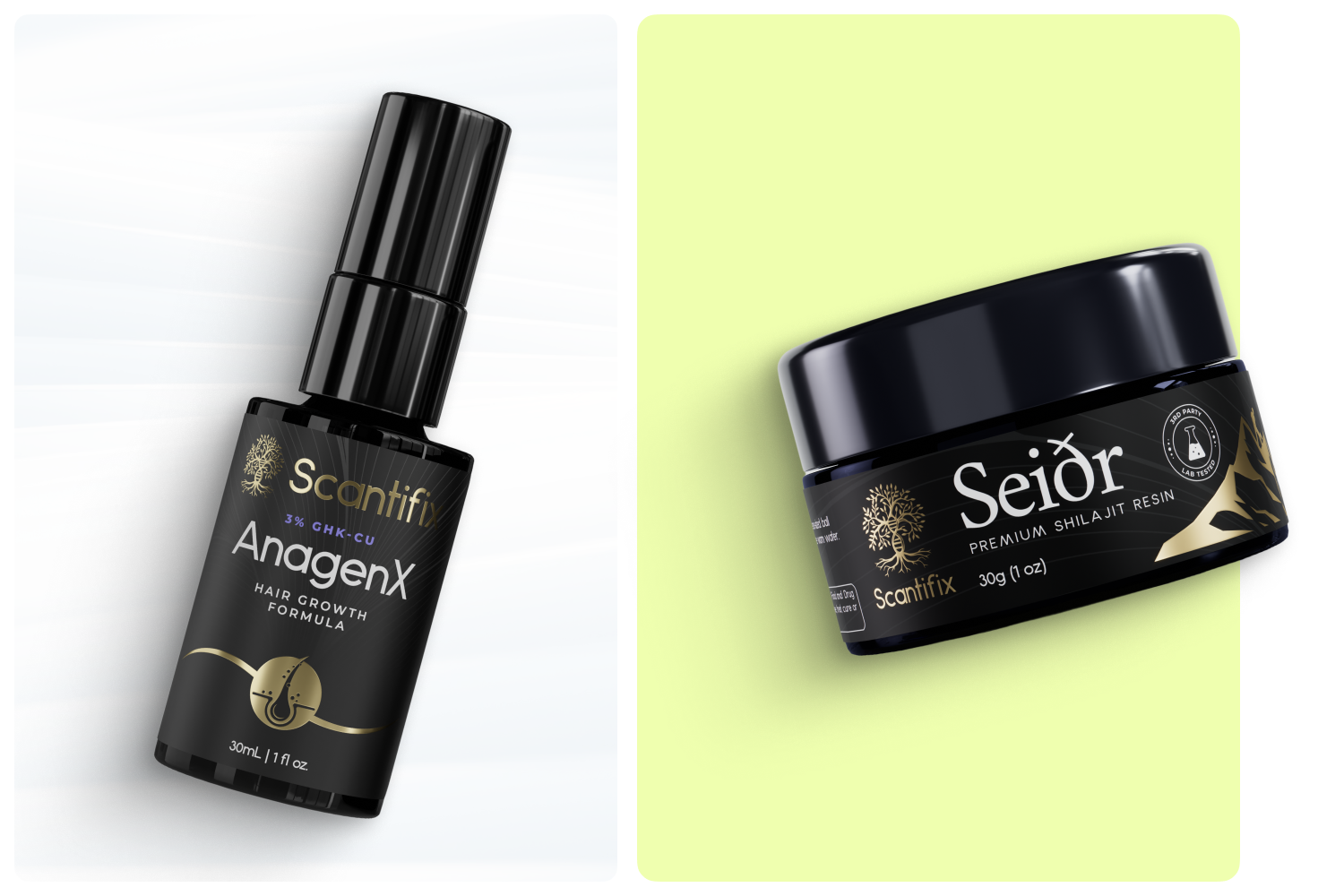Developing loose neck skin, or turkey neck, is a completely natural part of aging, but it’s understandable to want to restore firmness and feel more confident. We’re happy to share that there are proven, non-invasive ways to improve and support skin under the chin using a thoughtful combination of skincare, tools, and everyday techniques.
First, let’s take a closer look at what’s really happening when turkey neck develops and why it occurs in the first place.
What Is Turkey Neck?
Turkey neck might sound a little strange, but it’s a common term used to describe loose, sagging skin under the chin and around the neck. This area of skin may become crepey, wrinkled, or form soft folds.
Biologically, this happens because of a decrease in collagen and elastin, proteins responsible for keeping the skin firm and elastic. As these decline with age, the skin’s ability to “snap back” diminishes. Additionally, the muscles beneath the neck skin can weaken, which contributes to that drooping look commonly associated with turkey neck.
What Causes Loose Neck Skin?
Several factors contribute to sagging neck skin. Some are within our control, while others are just part of how our bodies change over time.
Aging
With age, collagen and elastin production naturally slows down. This makes the skin thinner and less firm (Varani et al., 2006).
Sun Damage
UV radiation breaks down collagen fibers and leads to premature aging (photoaging), particularly in areas like the neck that are often overlooked when applying sunscreen (Grochowski et al., 2021).
Weight Fluctuations
Gaining and losing weight can stretch the skin. When fat volume decreases quickly, the skin may struggle to adjust, especially if elasticity is already compromised.
Genetics
Some individuals are more genetically predisposed to early signs of loose neck skin, depending on their skin thickness, collagen structure, and bone anatomy.
Smoking
Smoking reduces circulation and introduces free radicals into the skin, leading to faster collagen breakdown and poor skin repair over time (Morita, 2007).
Posture
Constant downward posture—sometimes called “tech neck” in reference to looking down at electronic devices—can encourage skin creasing and weaken underlying support structures.
Understanding these underlying causes is the first step. Now let’s look at the most effective, non-invasive ways to address loose neck skin and improve firmness over time.
How to Treat Loose Neck Skin Without Surgery
A range of treatments exist for sagging neck skin and the approach will depend entirely on your individual needs and desired outcomes. While some opt for surgical lifts or injections, many people benefit from non-invasive turkey neck treatments that target the root causes: collagen loss, weakened muscles, and skin laxity.
Let’s explore the most effective approaches you can try—most of them from the comfort of your home.
Peptides
Peptides are becoming more and more prevalent in anti-aging skincare. These small chains of amino acids act as signals to encourage skin cells to behave more youthfully. When applied topically, they can boost collagen, elasticity, and firmness, especially when used consistently.
- Snap-8
Snap-8 is a topical peptide known for reducing expression lines and enhancing skin firmness. It works by softening muscle tension on the skin’s surface, which helps create a smoother, tighter appearance (Errante et al., 2020).
- GHK-Cu (Copper Peptide)
GHK-Cu is widely studied for its ability to regenerate tissue, increase collagen synthesis, and improve skin elasticity. It also has anti-inflammatory and antioxidant properties, making it particularly valuable for aging and sagging neck skin (Pickart & Margolina, 2018).
Microneedling
Microneedling is a non-invasive treatment that uses very fine needles to create channels in the top layer of the skin. This process stimulates collagen production and makes it easier for skincare ingredients, like peptides, to reach deeper layers.
Clinical studies have shown that microneedling can improve skin firmness and elasticity, especially when paired with topical serums (Litchman et al., 2022).
Electrical Muscle Stimulation (EMS)
Electrical Muscle Stimulation uses low-level electrical currents to activate facial and neck muscles. These gentle pulses improve blood flow and support the underlying muscle structure that holds skin in place.
One key area it targets is the muscle that runs vertically along the front of the neck, which weakens with age. Strengthening this muscle helps support the skin from beneath, creating a firmer, more lifted appearance.
Studies suggest EMS can improve muscle tone, skin density, and overall facial rejuvenation (Shin et al., 2022). For turkey neck treatment, it’s a valuable tool in tightening skin non-surgically and improving definition in the jawline and neck.
Ultrasound and Radiofrequency Treatments
Ultrasound and radiofrequency (RF) treatments offer additional non-surgical options for improving loose neck skin. Both work below the surface to help stimulate your body’s natural collagen production—ultrasound targets deeper layers where collagen is formed, while RF gently heats the skin to encourage tightening over time.
These treatments aren’t surgical, but they do need to be administered by experienced, certified providers and using FDA-cleared equipment. While non-invasive, they can come with mild side effects like redness or temporary swelling, and some have reported discomfort during treatment. You might consider these options if you’re looking for a more clinical approach to treatment, but still want to avoid surgery.
Exercises
Facial and neck exercises can help improve muscle tone, circulation, and lymphatic drainage. Over time, this can contribute to a more sculpted and supported neck area.
Try these neck exercises for loose skin:
-
Neck Lift Hold: Lie flat and lift your head slightly off the ground. Hold for five seconds. Repeat 10 times.
-
Ceiling Kiss: Tilt your head back and pucker your lips toward the ceiling. Hold for five seconds. Repeat 10–15 times.
The results may be subtle, but consistency matters. Incorporating these into your daily routine can support other treatments and help prevent further sagging.
Massage
Neck massage encourages circulation and helps support the lymphatic system, which may improve tone and help reduce the appearance of loose skin.
At-Home Technique:
- Apply a peptide-rich serum like Snap-8 or GHK-Cu.
- Using upward strokes, gently massage from your collarbone to your jawline with your fingertips.
- Do this for 3–5 minutes daily.
Facial massage tools like gua sha or rollers can enhance the effect, and professional treatments may go deeper. A study on facial massage found improvements in skin thickness and elasticity over several weeks of regular use (Caberletto et al., 2017).
Treatments like peptides and microneedling can help improve loose neck skin, but they’re only part of the picture. With the right habits and a proactive approach, it’s possible to support neck firmness long before sagging becomes visible.
How to Prevent Loose Neck Skin
Even if you haven’t noticed loose skin yet, taking action early can make a meaningful difference. Many of the same treatments used to improve firmness can also help preserve it when started before visible signs appear. Preventing loose neck skin isn’t just about one product or tool, it’s about building consistent habits that support your skin’s structure over time.
Daily Sunscreen
The neck is often forgotten, but it’s just as vulnerable as the face. Daily application of SPF 50 or higher helps prevent UV-induced collagen breakdown.
Skincare Routine
Establish a skincare routine and don’t forget to include your neck. Include ingredients like peptides, retinoids, hyaluronic acid and antioxidants to help boost collagen, hydrate, and protect.
Neck Exercises
Building neck muscle tone gradually helps the skin stay supported over time. These movements also promote circulation, which is essential for healthy skin.
Hydration and Antioxidants
A diet rich in vitamins A, C, and E, along with proper hydration, gives skin the nutrients it needs to repair and regenerate.
Avoid Smoking
Smoking accelerates aging throughout the body, especially by depleting collagen in the skin. Avoiding it is one of the most impactful decisions you can make for long-term skin health..
Final Thoughts
There are more ways than ever to treat loose neck skin and get rid of turkey neck without surgery. Modern skincare science gives us access to ingredients and tools that not only improve skin appearance but support its natural biological processes.
Combining peptides, microneedling, EMS, and simple at-home techniques like massage and exercises can create real, visible improvements in firmness and skin tone. Prevention is just as important—daily habits and the right skincare can delay or even avoid the development of turkey neck altogether.
If you’re ready to start preventing or reversing loose neck skin, Scantifix offers high-purity peptides and advanced skin care devices designed to make professional-level treatment accessible at home.
References
Caberletto, E., Pillet, F., Chopard, J., Dass, D., Dieudonné, Y., Gendron, A., Keskin, M., Prêcheur, N., & André, N. (2017). Effects of a skin-massaging device on the ex-vivo expression of human dermis proteins and in-vivo facial wrinkles. PLoS ONE, 12(3), e0172624. https://doi.org/10.1371/journal.pone.0172624
Errante, F., Ledwoń, P., Latajka, R., Rovero, P., & Papini, A. M. (2020). Cosmeceutical peptides in the framework of sustainable wellness economy. Frontiers in Chemistry, 8, 572923. https://doi.org/10.3389/fchem.2020.572923
Grochowski, C., Blicharska, E., Krukow, P., Jonak, K., Maciejewski, M., Szczepanek, D., Jonak, K., Flieger, J., Maciejewski, R., & Serafin, Z. (2021). The impact of ultraviolet radiation on skin photoaging — review of in vitro studies. Journal of Cosmetic Dermatology, 20(11), 3427-3431. https://doi.org/10.1111/jocd.14033
Litchman, G., Nair, P. A., Badri, T., & Kelly, S. E. (2022). Microneedling. In StatPearls [Internet]. StatPearls Publishing. https://www.ncbi.nlm.nih.gov/books/NBK459344/
Morita, A. (2007). Tobacco smoke causes premature skin aging. Journal of Dermatological Science, 48(3), 169–175. https://doi.org/10.1016/j.jdermsci.2007.06.015
Pickart, L., & Margolina, A. (2018). Regenerative and protective actions of the GHK-Cu peptide in the light of the new gene data. International Journal of Molecular Sciences, 19(7), 1987. https://doi.org/10.3390/ijms19071987.
Shin, D., Park, M., Choi, Y., Kim, J., Lee, H., & Kim, S. (2022). Effects of medium frequency EMS (electrical muscle stimulation) at-home beauty device on the facial skin improvement. Journal of the Korean Society of Cosmetology, 28(5), 1031-1041. Retrieved from https://www.researchgate.net/publication/365128194_Effects_of_Medium_Frequency_EMS_Electrical_Muscle_Stimulation_At-home_Beauty_Device_on_the_Facial_Skin_Improvement
Varani, J., Dame, M. K., Rittie, L., Fligiel, S. E. G., Kang, S., Fisher, G. J., & Voorhees, J. J. (2006). Decreased collagen production in chronologically aged skin: Roles of age-dependent alteration in fibroblast function and defective mechanical stimulation. The American Journal of Pathology, 168(6), 1861–1868. https://doi.org/10.2353/ajpath.2006.051302.








Leave a comment
All comments are moderated before being published.
This site is protected by hCaptcha and the hCaptcha Privacy Policy and Terms of Service apply.